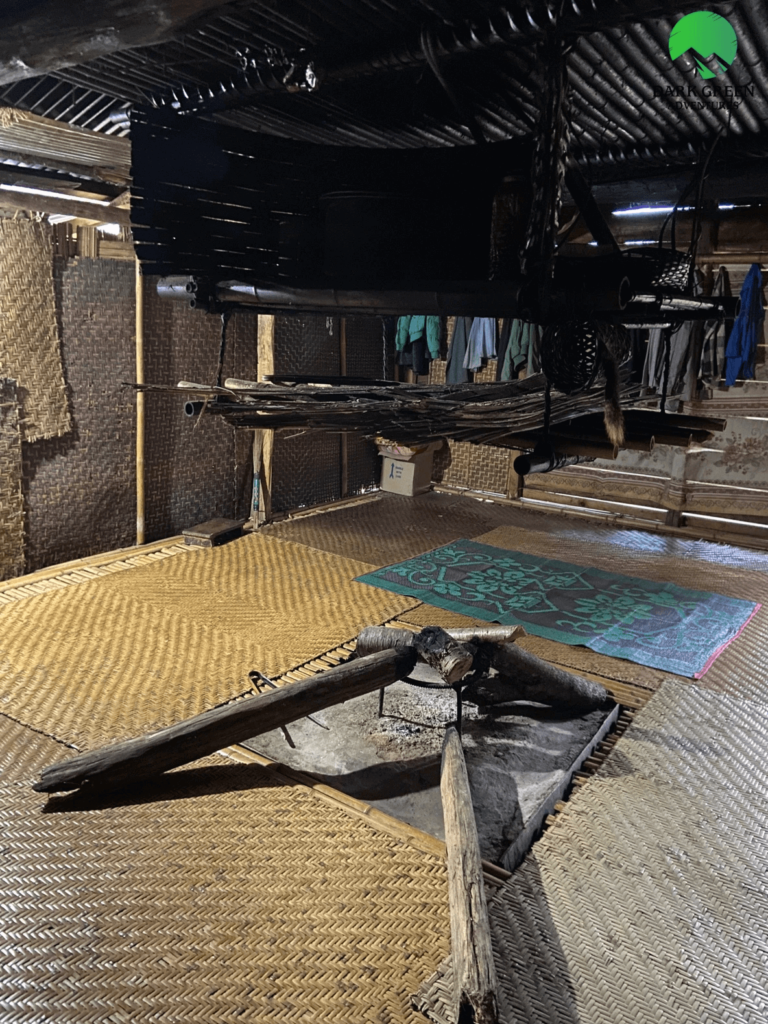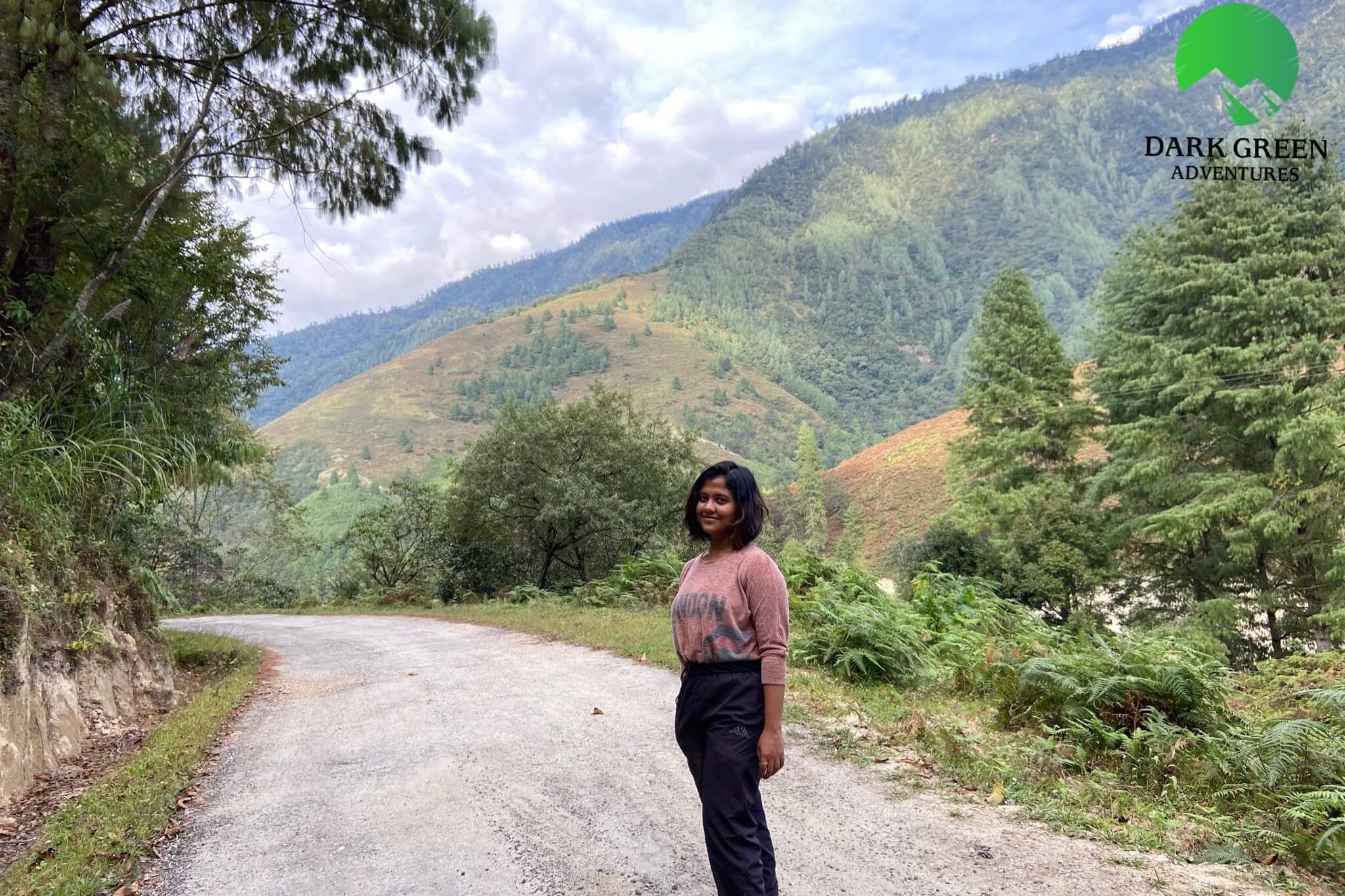Every Diwali my guy sets out on his own personal ventures. Being a passionate traveler but a professional trip organizer with a busy schedule, he just gets those couple of weeks during Diwali to satisfy his own quest for expeditions. So nevertheless, he utilizes this time to hitchhike into any unexplored location. The destination for last Diwali was the untouched easternmost valleys of Arunachal Pradesh. This time around I decided to tag along.

Preparatory Month for exploring the unexplored:
Being an amateur traveler with absolutely zero experience of backpacking and hitchhiking, my journey for the trip started more than a month before the actual trip. Under his guidance, I started becoming fitter, both physically and mentally, as well as learnt the basics of packing for such a trip. On the D-day, with little general knowledge and complete trust in my guy, I met him at Guwahati airport from where the journey to one of the best trips of my life began. The trip covered two of the remotest valleys in Arunachal Pradesh.
Part 1 – Upper Dibhang Valley
Upper Dibhang Valley is the north-eastern most corner of Arunachal Pradesh. Though being the largest district of Arunachal, it has the lowest density of population.
The entire district has a population of 8000. Yes, you read it right, just 8000.
The Valley consists of undulated-rugged mountains with breathtaking green valleys, deep-down gorges, enchanting waterfalls, natural lakes of various dimensions and innumerable meandering rivers and turbulent streams. The head-quarter of the district is a small town called Anini – our first destination for the trip.
sounds interesting? Wanna know more about Arunachal, join the channel – https://whatsapp.com/channel/0029Va5Sg1mJJhzVuYfZyP0T

Reaching Lower Dibhang Valley
From Guhawti, we took a train to Tinsukia, a commercial town of Assam. Alternatively, one can also take a connecting flight to Dibrugarh, a town close to Tinsukia. We reached Tinsukia the next evening and took a bus to Shantipur, which is a border town between Assam and Arunachal. Beyond Santipur, we need an Inner Line Permit (ILP) to enter Arunachal. We reached Santipur around 9 p.m., which is late night as per North-East standards and hence decided to crash into a hotel for the night. Next morning, we made our ILP and started our Journey towards Roing, the district headquarters of Lower Dibhang Valley and the entry point to Arunachal. The journey from Santipur to Roing is around 45 minutes in an Auto.
Finally, to Anini:
From Roing, Anini is around 256 km, which takes around 10-11 hours to cover considering the average road conditions of the mountains. There’s a shared sumo service that runs once a day, early morning from Roing to Anini, charging around Rs. 1000 pp. That morning, we missed our Sumo. Determined to reach Anini that evening itself, we decided to hitchhike.
Carrying a backpack weighing around 15kgs each along with our sleeping bags in hand, we started walking uphill towards Anini.
Any vehicle stopping by us would be surprised to think that we were planning to walk all the way to Anini, but despite that thought, whoever we asked for a lift kept saying “We are just going nearby”. Finally, my guy decided that we will just hop into the next vehicle that stops and would go wherever their ‘nearby’ is. And with that after walking uphill for more than a km, we got our first lift from a pickup vehicle that dropped us at a village pass around 6kms from Roing. From there, another pick-up vehicle dropped us till Hunli, a picturesque hamlet, around 100 kms from Roing.

Buddhist Café:
Midway, from Roing to Hunli, we stopped at a Buddhist café, called 65 located at around 65kms from Roing. Your guess is correct, the distance is how the café got its name “65”. The cafe was in a serene and secluded village, also called ‘Basti’ in the local language. The Basti consisted of just 3 houses surrounded by beautiful mountain ranges.
It was the only eatery for miles in that stretch of road. So basically, there were just around three houses and rest all mountains. Get an idea of the low population density yet?

The journey continues:
We reached Hunli around afternoon and having no hopes of getting further lift at that time of the day in a remote place like Dibhang Valley, we were thinking of taking a halt in Hunli itself. Just as we were pondering on that thought, we got a lift from someone who seemed to be an influential person in the region. Luckily the person was also going to Anini. The journey from Hunli to Anini, was nearly the same distance as from Roing to Hunli but it took us almost twice the time, thanks to the road conditions. Being a Xylo, the ride was comfortable with thrilling patches of steep turns through partially constructed hilly roads, surrounded by mountain ranges and beautiful transparent blue rivers. We reached Anini late evening and rested in a local home stay there.

Interesting fact to note here is, till the 1980s, there was absolutely no road from Roing to Anini and the nearby villagers and locals used to trek through the dense forest mountains for 3-4 days straight to reach their villages. Thrilling, isn’t it?
Towards our next stop
Our main intention to go to Anini was to spend some peaceful days in the remotest villages of India. En route Anini, we came to know about two villages, Mipi and Dembeung – the last two villages of India in Dibhang Valley, situated at opposite ends from Anini. The morning after we reached Anini, we started our venture towards Mipi, once again we were ready to hitchhike with all our luggage.

Hitchhiking again?
Now one might wonder, how did we build up so much confidence to hitchhike through one of the remotest regions in India. To answer that, let’s go back to our 15kgs backpack per person. At all points of time during the trip, we were carrying enough food for 2 days at least, which included nuts, milk cartons, muesli, dates, health bars and some uncooked dal-chawal too. Along with that we were carrying proper layering in the form of thermals, sweaters, jackets, gloves, etc. We had a sleeping bag and an emergency first aid kit, with all the needed medicines, insect repellants, bandages, etc. So basically, we were all prepared to spend a night outside in the open in case of any emergency and that’s what gave us the confidence to hitchhike.
Mipi:
Mipi is a tiny village, consisting of around 7 houses, at 35 kms from Anini.
The total population of Mipi would be around 15 people.
Midway from Anini to Mipi, falls Emuli, which is known for the starting point of ‘Seven Lakes Trek’ of Arunachal.

A company vehicle, carrying laborers for road construction, gave us lift till Brango, which is around 5 kms before Mipi. A very interesting thing to note here is that all the villages in the Dibhang Valley hardly have around 3 houses and just around 10 people on an average.
From Brango, we started walking 2 kms uphill through dense forest roads and reached Mipi 1.

In Mipi 1, a friendly local, called Timilee, hosted us for the night. Since we were already carrying our sleeping bags with us, we just requested her to give us a small corner of her home where we can sleep in our sleeping bags for the night. But instead, she had a lot to offer.
Stay in a local Arunachal House:

Timilee’s house was a traditional Arunachal house made of wood and Bamboo, with a huge fireplace at the center of the sitting area. The floor was made of bamboo carpet very intricately designed and made by her husband.
Almost all the village homes in the valley had a similar construction. Surrounding her home was a beautiful vegetable garden where the family grew some local vegetables.

In the evening, we roamed around the hills for 5-6 kms and reached Mipi 2, which is the last civil settlement on that side. Mipi 2 mainly has the Army camp, and Indo-Tibetan Police camps, along with a helipad.
Beyond Mipi 2, there is no proper road and the army treks till the border, which is around 50kms from that region, through dense forest covered mountains. Hats off to the protectors of our nation!

We spent the night at Timilee’s place, having local home-cooked food made from the local vegetables grown in her garden. After dinner, we played cards with Timilee and her children, watched a movie, had some chit chat sessions near the fireplace and retired for the night. Next morning, after breakfast, Timilee’s husband dropped us back to Brango.

Explored the mountain, now comes the river.
Brango has a secret narrow pathway to reach the enchanting river flowing through the valley.
Keeping our bags at a kind local’s place, we trekked down to the river. It was a long stretch of river flowing through the valley, surrounded by forest clad mountains and some tiny waterfalls here and there.

At that point of time, me and my guy were the only humans present in the river front, in the lap of those mountains. Lost in each other’s arms and the serenity of the region, we spent some time in solitude, enjoying each other’s company with some boiled local beans packed from our lovely host’s home.

Back to Base 1:
After spending a couple of hours on the riverfront, we decided to head back towards Anini. Since we started our journey back at around 10 a.m., which is almost mid-day by Arunachal standards, we were not getting any lift. After spending 3-4 hours waiting by the partially constructed roadside, surrounded by forest, finally we got a lift from a pick-up vehicle who dropped us to Anini. In Anini, we spent the night at an amazing homestay, The Pine Valley, owned by Mr. Bande Mili. Our room had a personal kitchen, where we prepared our own breakfast the next morning and then left for the next destination.
Curious to know about where we headed next in this trip? Stay tuned for the next part of the blog…
Interested in such raw travelling: Check out the link for some of our awesome trips – https://wa.me/c/919820285295
Community of Responsible Travelers – https://www.facebook.com/groups/darkgreenadventures/

